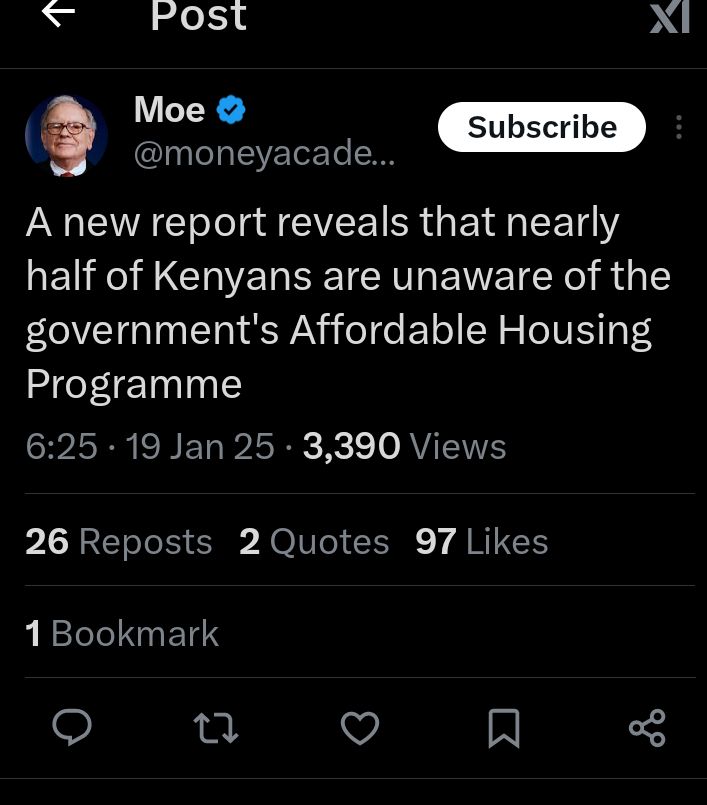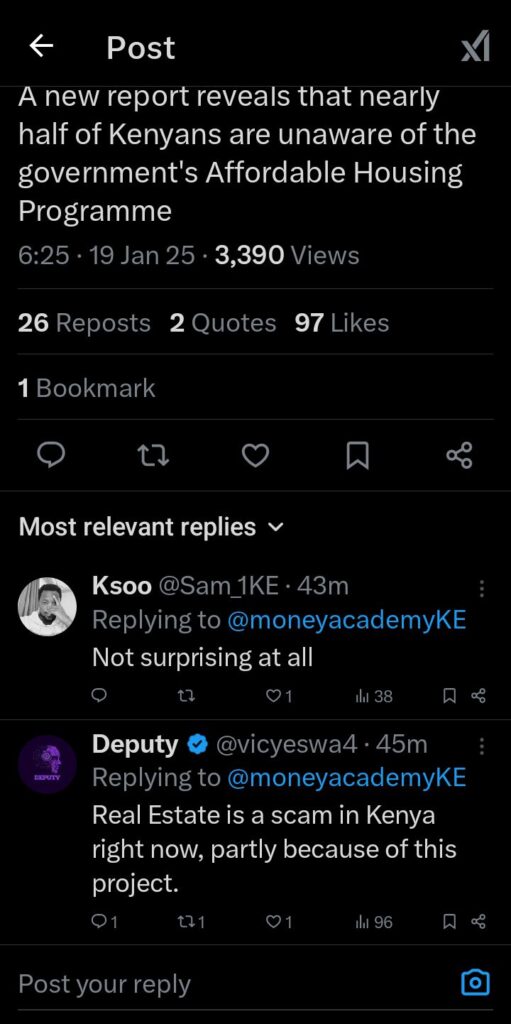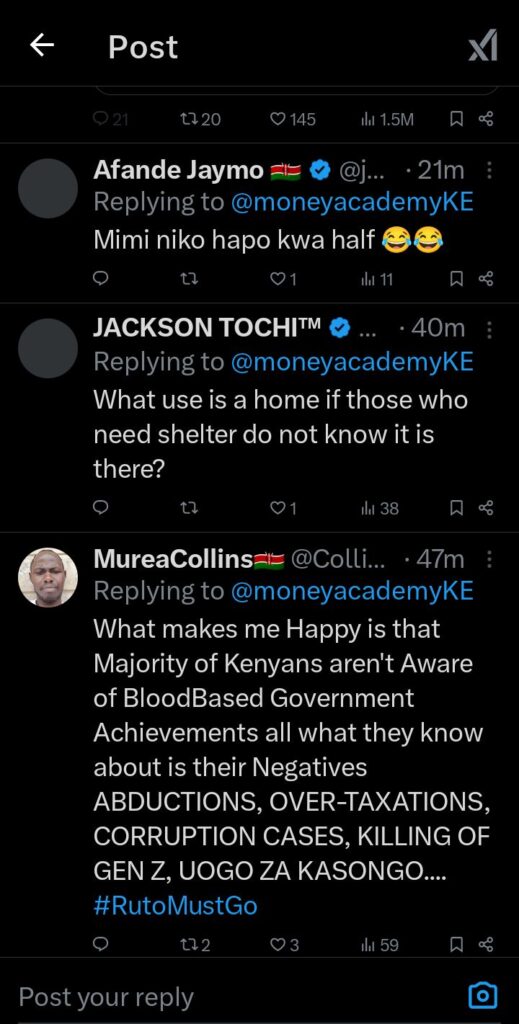A recent report as shared on X by MOE, highlights that nearly half of Kenyans are unaware of the government’s Affordable Housing Programme.
This initiative aims to address the country’s housing deficit, which the World Bank estimates at 2 million units.
The government has set an ambitious goal to construct 250,000 houses annually to bridge this gap.
Kenya’s urban population is expanding rapidly, with approximately one-third of the nation’s over 50 million people residing in cities.

Alarmingly, 70% of these urban dwellers live in informal settlements lacking basic infrastructure.
The Affordable Housing Programme is designed to provide decent and affordable homes for low- and middle-income families, aiming to improve living conditions and reduce the prevalence of slums.
Despite the programme’s objectives, awareness remains a major hurdle.
Many Kenyans, especially those in informal settlements, are not informed about the available housing options or the processes involved in acquiring these homes.
This lack of information hinders the programme’s effectiveness and prevents eligible citizens from benefiting.

The cost of a one-room government-built house is approximately $3,800, a price beyond the reach of many low-income families.
Their current home was constructed for about $380, highlighting the stark difference in affordability.
To enhance the programme’s reach and effectiveness, experts suggest adopting alternative construction technologies and financing models.

However, the current costs of these homes remain high, with a two-bedroom house priced at $22,000, indicating the need for further cost reductions to make them accessible to the broader population.


